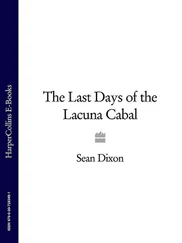That, as events were to show, was a serious underestimation of her abilities. But there was no sign of a glorious future for Catherine in the spring of 1759. Poniatowski had gone back to Poland in the previous August; Bestuzhev’s disgrace made it impossible for him to return to Russia. The death of her infant daughter on 8 March left her ‘inconsolable’. ‘It was only her virtue and her complete resignation to the decrees of Providence that could bring her out of her state of shock,’ Vorontsov reported to his nephew, enclosing a letter of condolence for Johanna Elisabeth. 60When Catherine’s debt-ridden mother herself died in Paris in May 1760, she was left completely alone. Like everyone else at the Russian Court, all she could do was watch and wait as the ailing empress entered the sixth decade of her life.
CHAPTER FIVE
Assassination
1759–1762
Modern historians of medicine have stressed that ‘virtually no important doctor in the first half of the eighteenth century placed the root of hysteria in the uterus’ and that ‘all forms of hysteria tended to be seen as the physical manifestations of a specifically mental derangement’. 1Told that Elizabeth’s symptoms had first manifested themselves when colic seemed to threaten the life of the baby Grand Duke Paul, François Poissonnier, the French specialist summoned to examine her at Peterhof in August 1759, declared it ‘easy to understand’ that fear had unsettled ‘all her nerves, and particularly those of the uterus’. Though he could find little wrong with her ‘excellent constitution’, Elizabeth’s lifestyle left much to be desired. The collapse at Tsarskoye Selo had been made the more serious by her refusal to follow her doctors’ advice. Observing that with age ‘the humours become slower in their circulation’, Poissonnier prescribed a purgative intended to induce two or three evacuations every day for a month. To sweeten the pill, the doctor suggested that his tablets should be dipped in marmalade and swallowed with an infusion of lime-blossom tea. He also prescribed coffee at bedtime, flavoured with liqueur d’Hofmann mixed with sweetened water or diluted lemonade. ‘This liqueur, which resembles nothing one might call a remedy because it is very pleasant, has the singular property of strengthening the nerves without inflaming them.’ While he particularly recommended peony, ‘whose taste is as good as its effects are salutary’, his main aim was to steer Elizabeth away from dairy foods and pastries. ‘I realise that Her Imperial Majesty has been accustomed to them since childhood, but when circumstances change, it is equally necessary to alter one’s habits.’ By the same token, her preference for lettuce, chicory, spinach, sorrel and watercress, cooked in meat juices, was bound to give her constipation. If she persisted with such a damaging diet, then she must accept the enemas he prescribed in return. Her best option, however, was regular exercise. Poissonnier advised her firmly against ‘too sedentary a lifestyle, which seems opposed to the vivacity of her character and to the continuous activity in which she engaged until the age of forty-five’. 2
Whether or not it owed anything to her doctor’s prescriptions, Elizabeth’s health seemed briefly to improve. In 1758, perhaps haunted by the memory of her collapse in the previous autumn, she had avoided Tsarskoye Selo altogether. Two brief visits are recorded from 1759, and the rhythm of her visits to the summer palaces began to pick up in 1760—a sure sign that she was feeling stronger. Even so, in these final years of her life she largely withdrew from public life, leaving much of the work of her government in the hands of her sophisticated favourite, Ivan Shuvalov. In retrospect, the continuities between Russian cultural policies of the late 1750s and those of Catherine’s own reign are obvious. It was largely thanks to Shuvalov, for example, that the Imperial Academy of Fine Arts was founded in St Petersburg in 1757 (Catherine was later to set it on firmer foundations), and he corresponded with Voltaire. 3But this burst of activity took place without the grand duchess’s involvement. In the wake of Bestuzhev’s disgrace, she had little option but to keep a low profile.
By the winter of 1760–61, the Russian Court was once again wreathed in gloom. On 7 January 1761, mourning was imposed for six weeks in memory of Britain’s George II. 4Elizabeth had not been seen in public since the St Andrew’s Day banquet at the end of November, where she sat between Peter and Paul. 5She did not appear again until Easter. At first, the British ambassador reported, it was ‘an attack of the tooth-ache which occasioned a swelling in her face’; after Christmas, Ivan Shuvalov told of lengthy nosebleeds. 6‘Apart from bouts of hysteria, and gradual symptoms of blood loss, and another local disease,’ wrote a well-informed French diplomat in the spring, she had been ‘suffering for the whole of the current winter with sores in her legs’. Stubbornly refusing to seek a cure, the empress remained ‘locked up completely alone’, subject to ‘frequent attacks of melancholy’, and with only Paul and her young Kalmyk servants for company. ‘When she admitted society, she could bear the presence of only the most restricted number of courtiers.’ 7
Behind closed doors, however, Elizabeth seemed determined to keep up appearances. A sense of her routine emerges from letters sent by her lady-in-waiting, Countess Anna Vorontsova, to her daughter, who was travelling abroad with her husband (‘I am sending you your favourite food, flabby fish: I don’t think it will go off’). 8When a favourite chorister married in January, the empress threw a party followed by dancing until four in the morning. While she was too ill to attend the theatre, the theatre came to her. A French comedy was performed in her apartments at Candlemas and, later that week, Sumarokov’s Russian players gave her his tragedy Sinav and Truvor (they had been fetched back from Moscow at short notice, prompting tantrums from the notoriously volatile playwright, who resigned shortly afterwards). 9On 9 February, Elizabeth felt well enough to sit for her portrait. 10Following Peter Shuvalov’s marriage eleven days later, she hosted a banquet in her own apartments. (Further weddings were put off until the autumn: ‘Think of the poor couples!’) This time there was no dancing, but Shuvalov threw a ball of his own, where Catherine joined Peter on 23 February, the last day of the carnival. 11
At that time, the Court was enjoying a visit from the French astronomer, the abbé Chappe d’Auteroche, en route to Siberia to see the transit of Venus across the sun. As Vasily Sukhodolsky’s attractive genre painting Astronomy suggests, this was a subject that interested courtiers of both sexes—indeed, one of the most extravagant purchases made by Peter’s mistress Elizabeth Vorontsova from the Court jeweller was a telescope with various figures mounted in gold and set with diamonds at a cost of 1200 roubles. 12On his return to France, Chappe repaid his hosts for their hospitality with a caustic account of his experiences in which Catherine is portrayed as the victim of a corrupt, despotic regime:
To all external appearances, the court of Russia seemed more tranquil than it had been for some time: but, on the inside, envy, jealousy, and mistrust swept through this vast palace. The grand duke no longer lived with his wife. The princess of Anhalt-Zerbst, born in a free country and brought up among the muses and the arts, was in no way brought down by this disgrace. Her natural talent and acquired knowledge furnished her with the greatest possible resources. She found tranquillity in the middle of the tumults of this court. Not wishing to remain ignorant of anything, she spent her moments of leisure in cultivating literature, the arts, and the sciences. 13
Читать дальше












